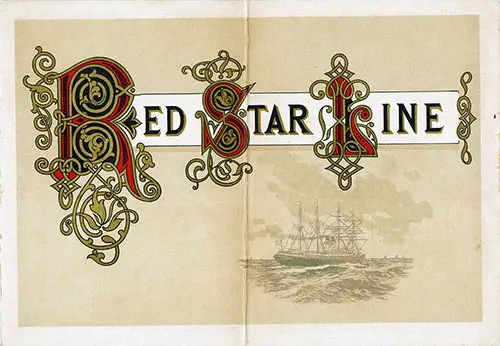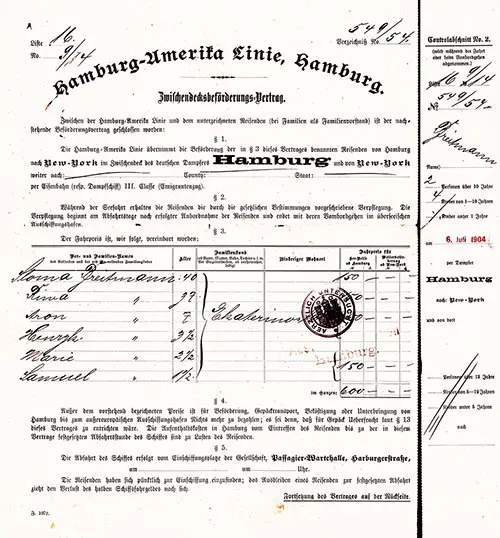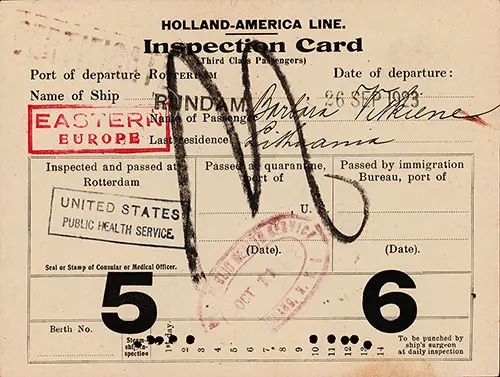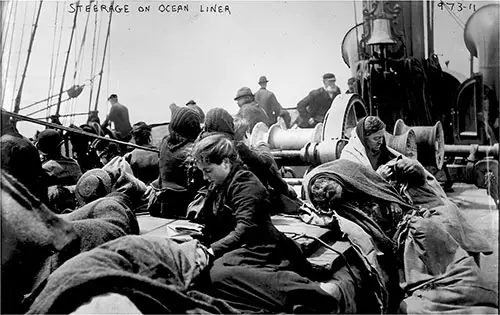Copy, Paste, Assemble (Your Family History)
The GG Archives is a treasure trove of historical articles, publications, and photographic collections, among other related historical items. While the collections may not be complete, the online items are meticulously selected to represent a sample of the extensive materials in their collection. However, the resources of the GG Archives do impose some limitations on what can be provided online.
Distinct from governmental archives like the National Archives or digitized governmental record repositories like Ancestry.com, the Gjenvick-Gjønvik Archives serves as a crucial companion to governmental records for genealogy research.

Front Cover of a Cabin Passenger List from the SS Friesland of the Red Star Line, Departing Saturday, 7 May 1892 from Antwerp to New York, Commanded by Captain Wm. G. Randle. GGA Image ID # 13fe11c071
By incorporating information about the ship, a sample passenger list cover from that steamship line and era, and details provided to passengers by the steamship line, the GG Archives can enrich your understanding of your family's genealogical facts. Articles on similar voyages can further illuminate your family's journey to America.
Illustrative Example
While this example is far from comprehensive, it intends to provide ideas of where to take your research based on the documents you have.
You are the Family Historian, and you have either copies or originals of an assortment of documents that your ancestors saved from their immigration to America, including:

Front Side, SS Hamburg of the Hamburg American Line Steerage Passage Contract For the Breitmann Family, 6 July 1904. On the Right Hand Side, A Strip Containing the Essential Contract Information That Was Most Likely Carried on the Person of Sloma Breitmann during the Voyage as a Receipt for Passage. GGA Image ID # 1f9bfa5f1d
- Contract for passage on a steamship (Example Above)
- Inspection Card for Steerage or Third Class Passengers (Example Below)

Front Side of a Holland-America Line Inspection Card (Third Class Passengers) for Lithuanian Immigrant, Sailing on the SS Ryndam (Rijndam) from Rotterdam to New York on 26 September 1923. GGA Image ID # 1fb9057e16
With these documents, you can gather information about the steamship line through brochures from that era; find a passenger list from the steamship line or the steamship to learn more about the ship, steamship line, and marketing focus of the steamship line.
Exploring our passage contracts may help you discover the terms and conditions in which your ancestors traveled – an English translation is already available for you.
Like today's Airlines, the principal steamship lines used a hub and spoke system to bring emigrants from various countries to the primary departure ports.
Therefore, if your ancestors departed from Trondheim, Norway, they likely sailed on a feeder steamship line, such as the Wilson Line, to a British port like Hull, England. They would take a train from that location to Liverpool or Southampton to depart for their destination. Review our ports of call section for historical information on the major ports.

Steerage Passengers on Deck of Ocean Liner - 11 March 1897. Bain Collection, Library of Congress # 2014684540. GGA Image ID # 145f9f3609
If your ancestor crossed the Atlantic in Steerage, note that most steamship lines did not create passenger lists for this class. While the passenger manifest will provide information about your ancestor, we have illustrations and photographs of steerage on several principal steamship lines that can help you visualize the conditions in which your ancestors traveled.
Be sure to check out historical articles written about Steerage and the evolution of this class of travel over time. Immigrants processed through Ellis Island have a wealth of information written about that immigrant station and the process they went through in their pathway to enter the United States. These articles are conveniently organized in our Immigration Archives section.
Last Updated: May 2024
